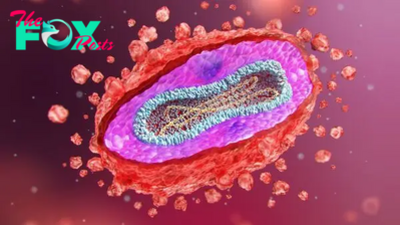Health
Largest animal genome sequenced — and just 1 chromosome is the size of the entire human genome
Scientists have sequenced the largest known animal genome — and it's 30 times bigger than the human genome.
The genome belongs to the South American lungfish (Lepidosiren paradoxa), a primeval, air-breathing fish that "hops" onto land from the water using weird, limb-like fins. The fish's DNA code expanded dramatically over the past 100 million years of evolutionary history, racking up the equivalent of one human genome every 10 million years, researchers found.
The findings could shed light on how genomes expand across the tree of life.
Lungfish are sometimes called "living fossils" because they have existed for hundreds of millions of years. They are thought to be the most closely related species to the first tetrapods, the ancestor of all vertebrates. These ancestors likely sprouted limbs and crawled onto land around 370 million years ago during the Devonian period, (419 million to 359 million years ago), Science reported.
Previously, scientists sequenced the genomes of other lungfish species, including the Australian lungfish (Neoceratodus forsteri). Next on the list were the African lungfish (Protopterus annectens) and (L. paradoxa), whose genome is twice the size of its air-breathing relatives from other continents.
The team described the South American lungfish genome Aug. 14 in the journal Nature. It turns out, these air-breathing fish carry a whopping 91 billion base pairs, or letters, of DNA in their genomes.
That's enough letters to fill 100,000 books. Yet only 20,000 genes actually code for proteins, meaning the rest may be mostly junk, the study found. More than 90% of the genetic material was made of transposable elements (TEs), or highly repetitive "jumping" genes that were copied from elsewhere in the genome.
-

 Health1d ago
Health1d agoHeman Bekele Is TIME’s 2024 Kid of the Year
-

 Health1d ago
Health1d agoHard-to-treat traumas and painful memories may be treatable with EMDR – a trauma therapist explains why it is gaining popularity
-

 Health1d ago
Health1d agoWest Nile virus season returns − a medical epidemiologist explains how it’s transmitted and how you can avoid it
-

 Health1d ago
Health1d agoHispanic women are less likely to get PrEP treatment − new intervention could change that
-

 Health2d ago
Health2d agoWHO Declares Mpox Outbreaks in Africa a Global Health Emergency
-

 Health2d ago
Health2d agoThe 1 Heart-Health Habit You Should Start When You’re Young
-

 Health2d ago
Health2d ago7 Metrics Everyone Should Know About Their Own Health
-

 Health3d ago
Health3d agoCatholic controversy erupts for Salve Regina U, “sole host” for pro-choice event for Tim Walz



























